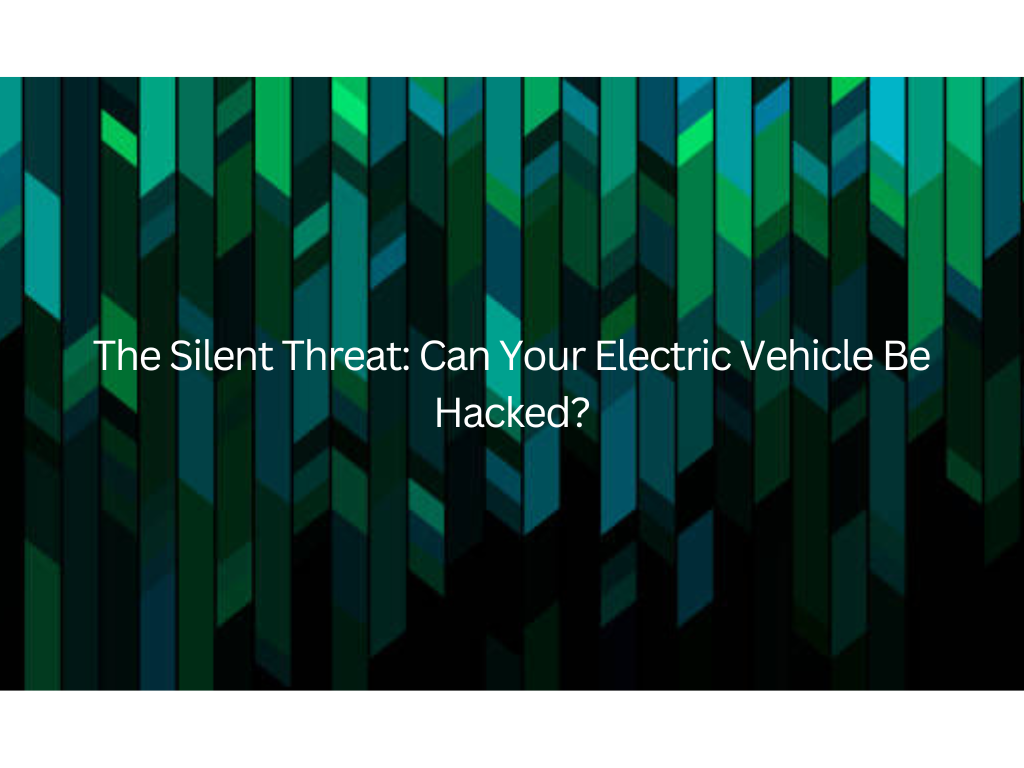As India accelerates toward its ambitious electric mobility goals, with government initiatives like FAME II propelling EV adoption across the nation, a critical question emerges from the digital shadows: How secure are these internet-connected vehicles from cyber threats? While we celebrate the technological sophistication of modern electric vehicles, their increasing connectivity creates an unprecedented attack surface that traditional automobiles never faced.
The Connected Car Revolution in India
India’s electric vehicle market is experiencing explosive growth, with sales surging over 200% in recent years. From Tata’s Nexon EV to Mahindra’s XEV 9e, and emerging startups like Ola Electric, modern Indian EVs are becoming rolling computers equipped with multiple internet-enabled features:
- Over-the-Air (OTA) updates that remotely modify vehicle software
- Telematics systems providing real-time vehicle diagnostics and location tracking
- Mobile app integration allowing remote vehicle control and monitoring
- Infotainment systems with internet connectivity and app ecosystems
- Vehicle-to-Everything (V2X) communication capabilities for smart city integration
Each of these features, while enhancing user experience and operational efficiency, creates potential entry points for malicious actors.
The Anatomy of EV Cyber Vulnerabilities
Modern electric vehicles operate on complex networks of Electronic Control Units (ECUs), often containing 100+ microprocessors communicating through various protocols. Unlike traditional vehicles with isolated systems, EVs integrate these networks with external connectivity, creating several attack vectors:
1. Wireless Communication Channels
EVs communicate through multiple wireless protocols including cellular networks (4G/5G), Wi-Fi, Bluetooth, and emerging V2X standards. Each protocol presents unique vulnerabilities that attackers can exploit to gain unauthorized access.
2. Cloud Infrastructure Dependencies
Most EV manufacturers rely on cloud services for data analytics, remote diagnostics, and software updates. Compromised cloud infrastructure can provide attackers with access to entire vehicle fleets, making the threat scalable and potentially catastrophic.
3. Mobile Application Vulnerabilities
The smartphone apps controlling EV functions often lack robust security measures. Weak authentication, insecure data transmission, and inadequate encryption can provide hackers with direct access to vehicle systems.
4. Third-Party Integration Risks
Modern EVs integrate with numerous third-party services, from payment systems for charging to navigation services. Each integration point represents a potential security weakness in the overall ecosystem.
Realistic Attack Scenarios: What Hackers Could Achieve
The potential consequences of EV cyberattacks extend far beyond mere inconvenience. Consider these realistic scenarios that security researchers have already demonstrated:
Remote Vehicle Control
Attackers could potentially disable critical safety systems, manipulate steering or braking functions, or even take complete control of the vehicle. In 2015, researchers demonstrated remote control of a Jeep Cherokee, forcing a major recall of 1.4 million vehicles.
Location Tracking and Stalking
EVs continuously transmit location data for navigation and fleet management. Malicious actors could exploit this information for stalking, planning thefts, or gathering intelligence on high-value targets.
Data Theft and Privacy Violations
Modern EVs collect extensive personal data, including travel patterns, contact lists, voice recordings, and biometric information. This data, if compromised, could enable identity theft, corporate espionage, or targeted harassment.
Ransomware Attacks
Attackers could potentially lock vehicle owners out of their EVs, demanding payment for restoration of access. Given the high value of EVs and their importance for daily transportation, victims might be more likely to pay ransoms.
Fleet-Wide Attacks
For commercial EV fleets, a successful cyberattack could simultaneously disable hundreds of vehicles, causing massive operational disruption and financial losses.
India’s Cybersecurity Preparedness: A Reality Check
India’s rapidly expanding EV ecosystem faces unique cybersecurity challenges that require immediate attention:
Regulatory Gaps
While India has robust IT security frameworks, automotive cybersecurity regulations remain nascent. The Bureau of Indian Standards (BIS) has begun developing automotive cybersecurity standards, but implementation and enforcement mechanisms are still evolving.
Industry Awareness Levels
Many Indian EV manufacturers, particularly smaller players and startups, lack comprehensive cybersecurity expertise. The focus on rapid market entry and cost optimization often overshadows security considerations during the development phase.
Consumer Education Deficit
Indian consumers, while increasingly tech-savvy, often lack awareness about automotive cybersecurity risks. The perception that vehicles are isolated systems persists, leading to poor security practices like weak passwords and delayed software updates.
Infrastructure Vulnerabilities
India’s charging infrastructure, while rapidly expanding, often lacks standardized security protocols. Unsecured charging stations could serve as entry points for attacking connected vehicles.
Building Cyber-Resilient EVs: Solutions and Best Practices
Addressing the cybersecurity challenges in India’s EV ecosystem requires a multi-stakeholder approach involving manufacturers, regulators, and consumers:
For Manufacturers
- Security by Design: Integrate cybersecurity considerations from the earliest design phases rather than treating it as an afterthought
- Regular Security Audits: Conduct comprehensive penetration testing and vulnerability assessments throughout the development lifecycle
- Secure OTA Updates: Implement robust authentication and encryption for over-the-air updates to prevent malicious code injection
- Incident Response Planning: Develop clear protocols for responding to security breaches, including communication strategies and remediation procedures
For Regulators
- Comprehensive Standards: Develop and enforce automotive cybersecurity standards specific to the Indian market conditions
- Mandatory Security Testing: Require cybersecurity certification before vehicle approval, similar to existing safety and emission standards
- Information Sharing Mechanisms: Create platforms for sharing threat intelligence across the automotive ecosystem
For Consumers
- Regular Updates: Ensure timely installation of security patches and software updates
- Strong Authentication: Use complex passwords and enable multi-factor authentication where available
- Network Security: Secure home Wi-Fi networks and avoid connecting to unsecured public networks
- Privacy Settings: Review and configure privacy settings to limit data collection and sharing
The Road Ahead: Securing India’s Electric Future
As India moves toward its goal of 30% electric vehicle adoption by 2030, cybersecurity cannot be an afterthought. The convergence of automotive engineering and information technology demands new approaches to vehicle security that address both physical and digital threats.
The automotive industry must embrace the same cybersecurity rigor that has become standard in other connected device sectors. This includes implementing defense-in-depth strategies, continuous monitoring systems, and rapid response capabilities for emerging threats.
For India’s EV ecosystem to thrive, stakeholders must recognize that cybersecurity is not just a technical challenge but a fundamental enabler of consumer trust and market growth. The vehicles of tomorrow will be defined not just by their efficiency and performance, but by their ability to protect the digital lives of their users.
The question is not whether electric vehicles can be hacked – security researchers have already demonstrated various attack vectors. The critical question is whether India’s EV ecosystem will proactively address these vulnerabilities before they become systemic threats. The time for action is now, as the decisions made today will determine the security posture of India’s electric future.
In this rapidly evolving landscape, the most secure EV will be the one that assumes it’s a target and prepares accordingly. As we embrace the promise of electric mobility, we must ensure that our vehicles protect not just our environment, but our digital security as well.
The connected nature of modern EVs requires the same robust cybersecurity infrastructure that protects our digital enterprises. Just as businesses rely on comprehensive security solutions including WAF and DDoS protection to safeguard their operations, the automotive industry must adopt similar defense mechanisms. At HaltDos, we understand that the future of mobility depends on building security into every connected system, ensuring that innovation and protection go hand in hand.




